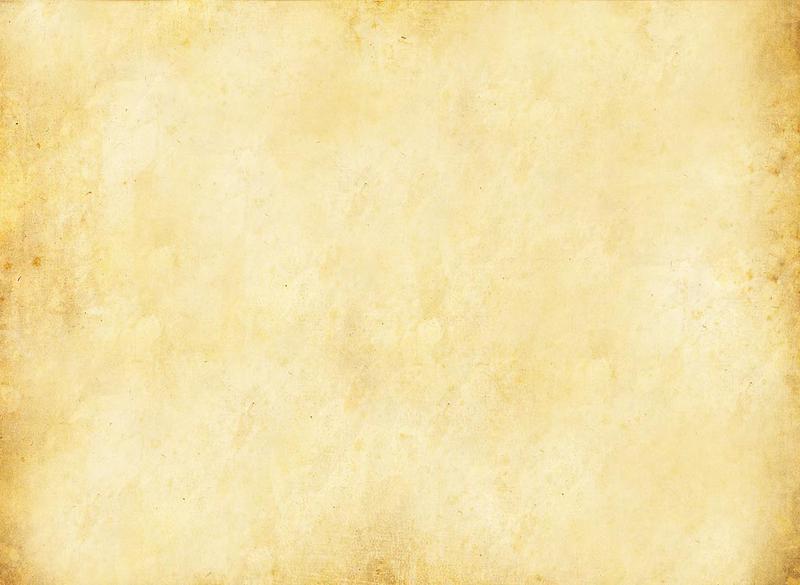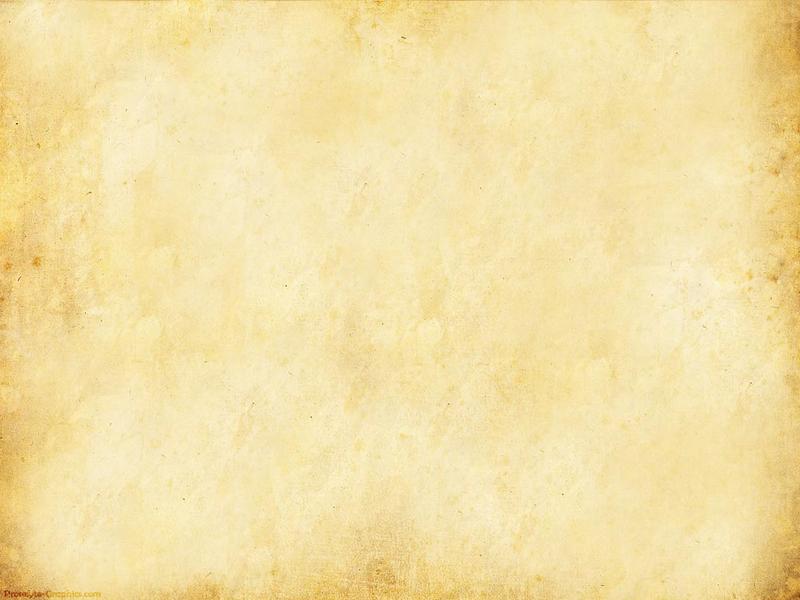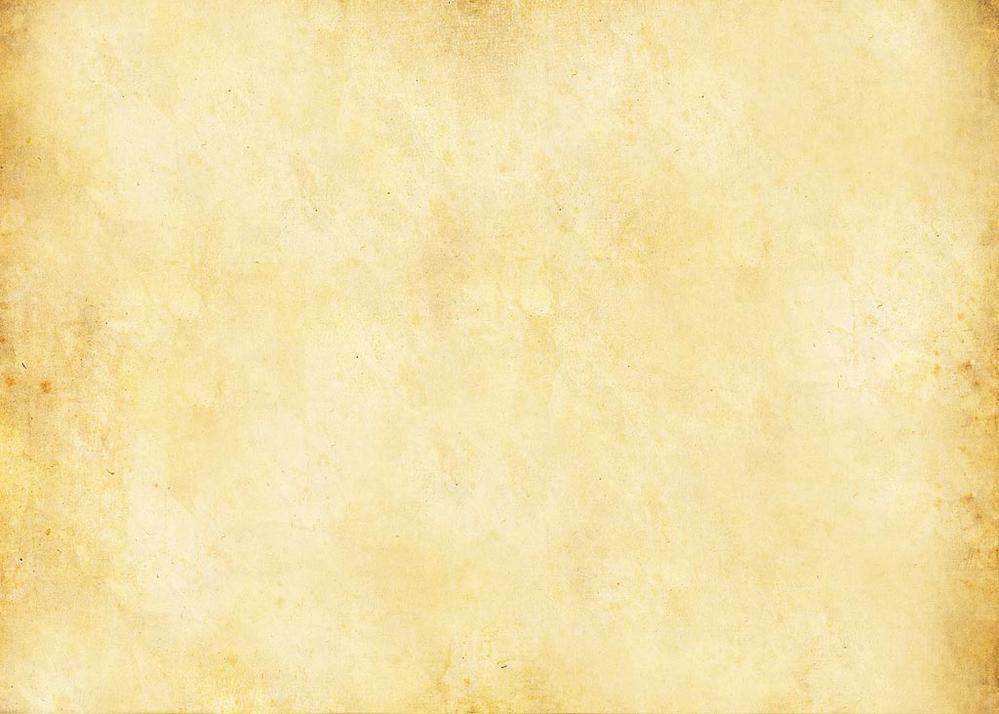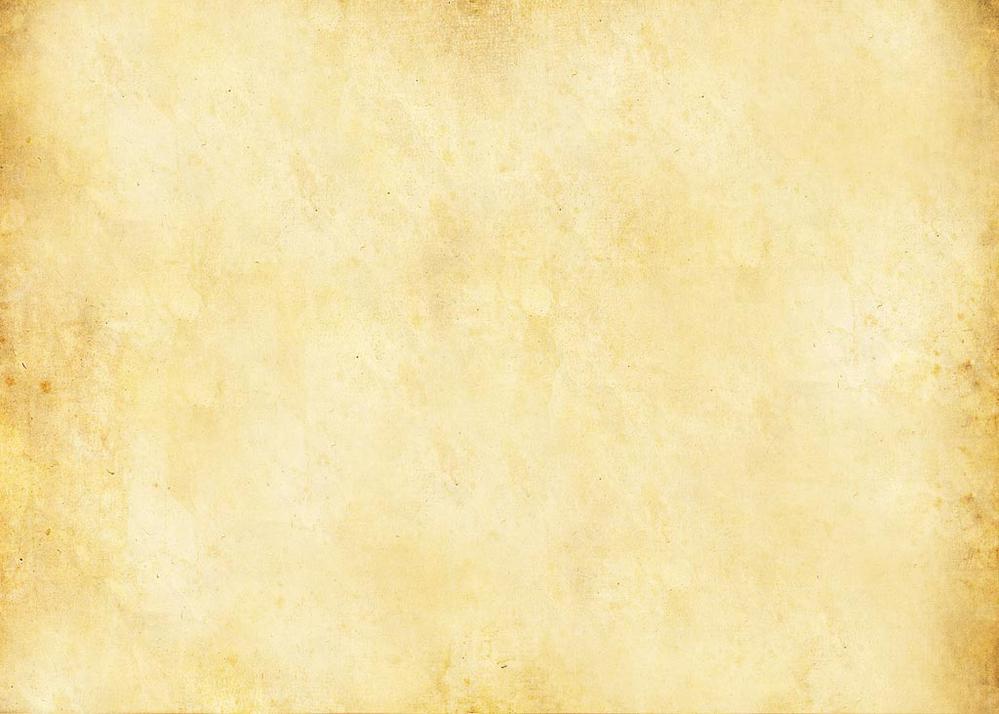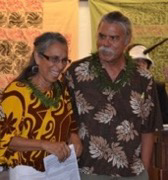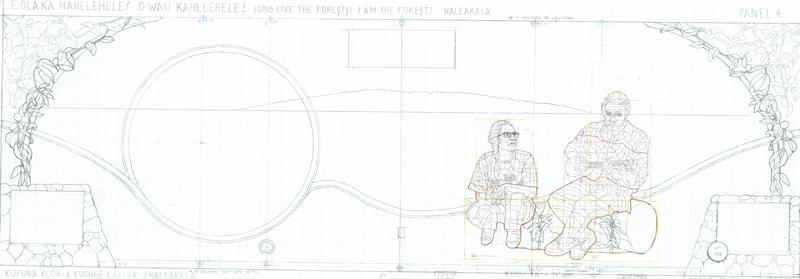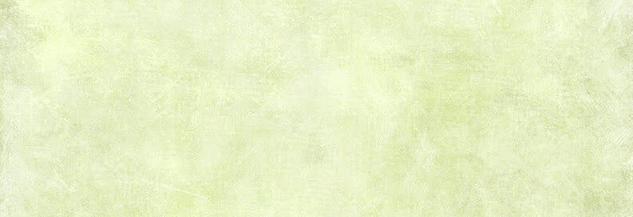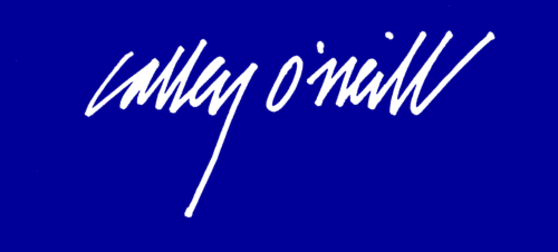WALL 4:
E OLA NAHELEHELE! O WAU NAHELEHELE!
LONG LIVE THE FORESTS! I AM THE FORESTS!
YVONNE YARBER CARTER and KEOKI APOKOLANI CARTER, kupuna for the Ka’upulehu Dryland Forest Restoration and Education Project. In their own special way, through awakening the people to sounds ~ to listen to the land, Keoki and Yvonne are working to restore this remnant endangered dry forest ecosystem. Their quest is to share its unique historical, cultural, and scientific aspects to educate and benefit Hawai’i residents and visitors from around the world. Standing with them are their dedicated alaka’i (lead students), Wilds and Lehua, to who they are passing the torch. This is a great responsibility and honor.
THE ANCIENT FORESTS OF HAWAI’I: Elegantly beautiful, in times of old, much of Hawai’i was a dense forest extending from mauka to makai, except on fresh lava flows, kekaha (dry) lands, beaches, and elevations above 10,000’.
Fed by healthy life giving streams on the east side, and ocean air moving inland condensing and being absorbed on the forested slopes, intermittent rains, and groundwater on the west side, all the Hawaiian Islands were forested at pre-contact time. Developed on volcanic islands in the middle of sea in isolation over 35 million years, the forests were planted by the winds, waters, and birds that carried 10,000 plus known plant species to the most remote lands on Earth. Imagine, the forest species that we have identified are miniscule in comparison to the plant communities that exist. More than 90% of these species are found nowhere else on Earth (endemism). There are an astonishing 48 types of forests here, with at least 175 species of native trees.
Once upon a time, the forests were habitat for at least 140 distinctive species of birds, 70 of which are extinct, and 30 endangered. Thus, the combination of antiquity and isolation (radial adaptation) created some of the most spectacular biodiverse (a multitude of species) treasure troves found anywhere on Earth. In a process known as adaptive radiation, one species became many here, again, more than anywhere else on Earth. Nature kept creating. Native forests are magical, mystical, gorgeous places with extensive biological and cultural significance. They are sacred places, legendary, and celebrated places. If the oceans were akin to ancient Hawaiian refrigerators, the dryland forests were akin to their toolboxes and medicine chests.
Amazingly, the dryland forests of Auahi on Maui and Pu’u wa’awa’a on the Big Island were the most biodiverse forests in Hawai’i, more diverse even that the rain forests. YVONNE YARBER CARTER and KEOKI APOKOLANI CARTER, kupuna for the Ka’upulehu Dryland Forest Restoration and Education Project. In their own special way, through awakening the people to sounds ~ to listen to the land, Keoki and Yvonne are working to restore this remnant endangered dry forest ecosystem. Their quest is to share its unique historical, cultural, and scientific aspects to educate and benefit Hawai’i residents and visitors from around the world. Standing with them are their dedicated alaka’i (lead students), Wilds and Lehua, to who they are passing the torch. This is a great responsibility and honor.
*AS WE ADD MORE GLASS ~ LIGHT COLOR HARMONIES: This panel will feature the exotic and sophisticated beauty of Hawaiian endemic and unique native trees and understory plants, found nowhere else in the world. Calley will seek to show the trees as kupuna, the elders that made the atmosphere. The people are kin: the newest descendants, learning to take care of the ancestors once again and restore their place. Morning light streams in from the upper left side. In a reversal of the norm, the foreground native trees may be dark and lush with predominantly greens, browns, ocres, siennas, purples. The background may be immersed in light with paler greens in many shades.
KOA AND KING KAMEHAMEHA: The beloved endemic, highly valued Koa tree (Acacia koa) is Hawai’i’s largest native tree (up to 115’). Found between 330’ to 7,500’, Koa played a significant role in Kamehameha’s quest to bring the islands together. Koa means brave, bold, fearless, valiant; courage, warrior. Koa symbolizes Kamehameha Nui (the Great). ‘OHIA: Beloved is the sacred ‘Ohia (Metrosideros polymorpha ~ meaning many forms). ‘Ohia is Hawai’i’s dominant forest tree, comprising approximately 80% of our native forests. From a tiny seed growing out of lava ~ springs the life of the land. The ‘ohia tree’s fuzzy leaves capture fresh water from the air and bring it down into ground. Ranging from sea level to 8,250’, ‘Ohia is an amazingly diverse and adaptable keystone species. The anchor of native Hawaiian forests, ‘ohia is the primary source of fresh water and provides most of the habitat and nectar for countless insects and birds. Over countless generations, ‘Ohia helped transform raw lava into soil, building the land and shaping the Hawaiian culture.
LAMA means torch, lamp, light, and is symbolic of enlightenment. A beautiful mostly dryland endemic hardwood tree in the ebony family, Lama (Diospyros sandwicensis) lives from sea level to 3,600’ +-. Carbon dating reveals Lama can live up to 1,600 years.
 | ||||
Hahai no ka ua i ka ulula’au.
TRANSLATION: The rain follows after the forest.
MEANING: Destroy the forest, the rains will cease to fall,
and the land will become a desert.
Think in tree time. Think in forest time. Think in ocean time. Take the long path.
Yvonne and Keoki Carter
Art and Soul for the Earth
Big Island of Hawai'i
